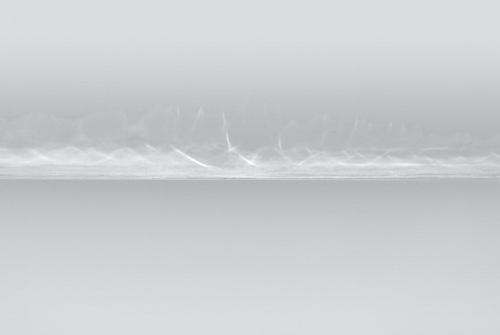http://www.westword.com/2008-07-10/culture/about-us-the-look-of-nowhere-and-jezebel/2/
About Us, The Look of Nowhere and Jezebel
Conceptual art sets the stage at BMoCA.
A A AComments (0) By Michael Paglia Thursday, Jul 10 2008
...continued from page 1
There's no indication of which direction to go as you enter the East Gallery; the space to the right is fairly well lit, while the left is almost completely darkened, so it makes sense to follow the light. This initial part of the show is dominated by a set of glass-topped tables lined up along the south wall called the "Tables of Inadvertence." The tables are covered with all manner of debris, including bits of wood, enigmatic contraptions and what look like dead birds, or at least their feathers.
Beyond this are two hemispheric mirrors, such as those you'd see in a convenience store. As you move forward, the exhibit gets darker and darker. You go past "The Rake of Evening," a floor-bound box with mirrors at the bottom. The crescendo of The Look of Nowhere is a large glass box titled "The Infinity Room." Viewers look through its transparent walls, which catch the light and reflect the contents: a cracked mud floor.
"The Infinity Room," by Scott Johnson, clay, glass, mirrors and other materials.
Details
Through September 6, Boulder Museum of Contemporary Art, 1750 13th Street, Boulder, 303-443-2122, www.bmoca.org.For a complete slide show of this exhibit, go to slideshow.westword.com.
Related Content
Now Showing
July 24, 2008
Now Showing
July 17, 2008
Now Showing
August 21, 2008
Now Showing
September 4, 2008
Now Showing
August 28, 2008
More About
Mark AddisonCarla GannisScott JohnsonVik MunizVisual Arts
From my point of view, an installation rises or falls on whether the artist is able to completely command a given space. It goes without saying that Johnson has done that, transforming the East Gallery into something that's out of this world.
The last of the three exhibits at BMoCA is Jezebel, a Carla Gannis solo displayed upstairs in the funky and tiny Union Works Gallery. Gannis, who lives in New York, where she teaches at the Pratt Institute and the School of Visual Arts, has been interested in digital photography since the 1990s. In the Jezebel pieces — which, like the works in About Us..., are also examples of conceptual realism — Gannis has appropriated imagery from the popular imagination as expressed in movies. Her subject matter, as indicated by the show's title, is the immoral woman, or femme fatale. Gannis creates scenes where, according to her artist's statement, "sexuality, power and class issues reverberate."
Many of the photos show the various Jezebel characters sitting or even dancing, but in one, "The Alley," she's been murdered and is lying on the ground, surrounded by police. I also was really struck by the wind-up music box that requires viewers to look through a peephole to see it.
Oh, I know, as a friend said when I was telling her about Jezebel, all you'd need to do is drop a stone and you'll hit an artist doing simulations of reality in posed and doctored-up digital prints. But as common as Gannis's approach is, this group of works is really engaging.
As this trio of offerings makes clear, BMoCA is a reliable source for first-rate shows of contemporary art, conceptual-realist and otherwise, and the credit goes to director Joan Markowitz and curator Kirsten Gerdes. Working together, the two have made the place one of the top aesthetic attractions in the state.










